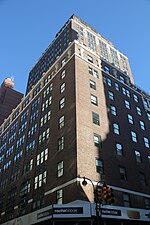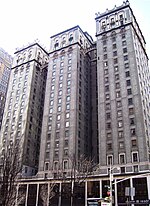Church of the Incarnation, Episcopal (Manhattan)
19th-century Episcopal church buildingsBuilding and structure fires in New York CityChurch fires in the United StatesChurches completed in 1864Churches completed in 1896 ... and 9 more
Churches in ManhattanDemolished buildings and structures in ManhattanDemolished churches in New York CityEpiscopal church buildings in New York CityGothic Revival church buildings in New York CityMurray Hill, ManhattanProperties of religious function on the National Register of Historic Places in ManhattanStone churches in New York CityVictorian architecture in New York City

The Church of the Incarnation is a historic Episcopal church at 205–209 Madison Avenue at the northeast corner of 35th Street in the Murray Hill neighborhood of Manhattan, New York City. The church was founded in 1850 as a chapel of Grace Church located at 28th Street and Madison. In 1852, it became an independent parish, and in 1864–1865 the parish built its own sanctuary at its current location. In 2020, it reported 505 members, average attendance of 109, and $241,642 in plate and pledge income.
Excerpt from the Wikipedia article Church of the Incarnation, Episcopal (Manhattan) (License: CC BY-SA 3.0, Authors, Images).Church of the Incarnation, Episcopal (Manhattan)
Madison Avenue, New York Manhattan
Geographical coordinates (GPS) Address Nearby Places Show on map
Geographical coordinates (GPS)
| Latitude | Longitude |
|---|---|
| N 40.748333333333 ° | E -73.9825 ° |
Address
Cinco Coffee Company
Madison Avenue 199
10016 New York, Manhattan
New York, United States
Open on Google Maps





